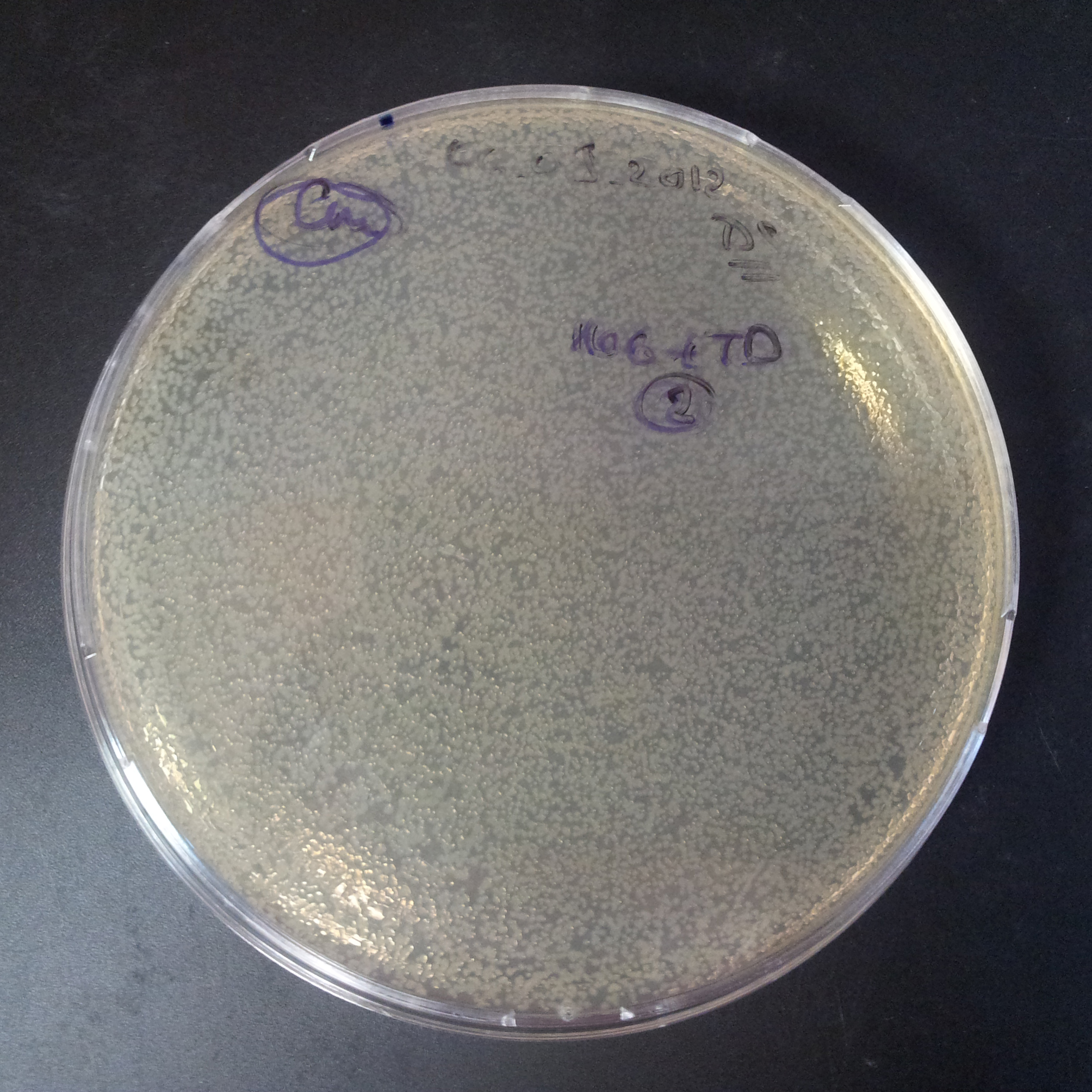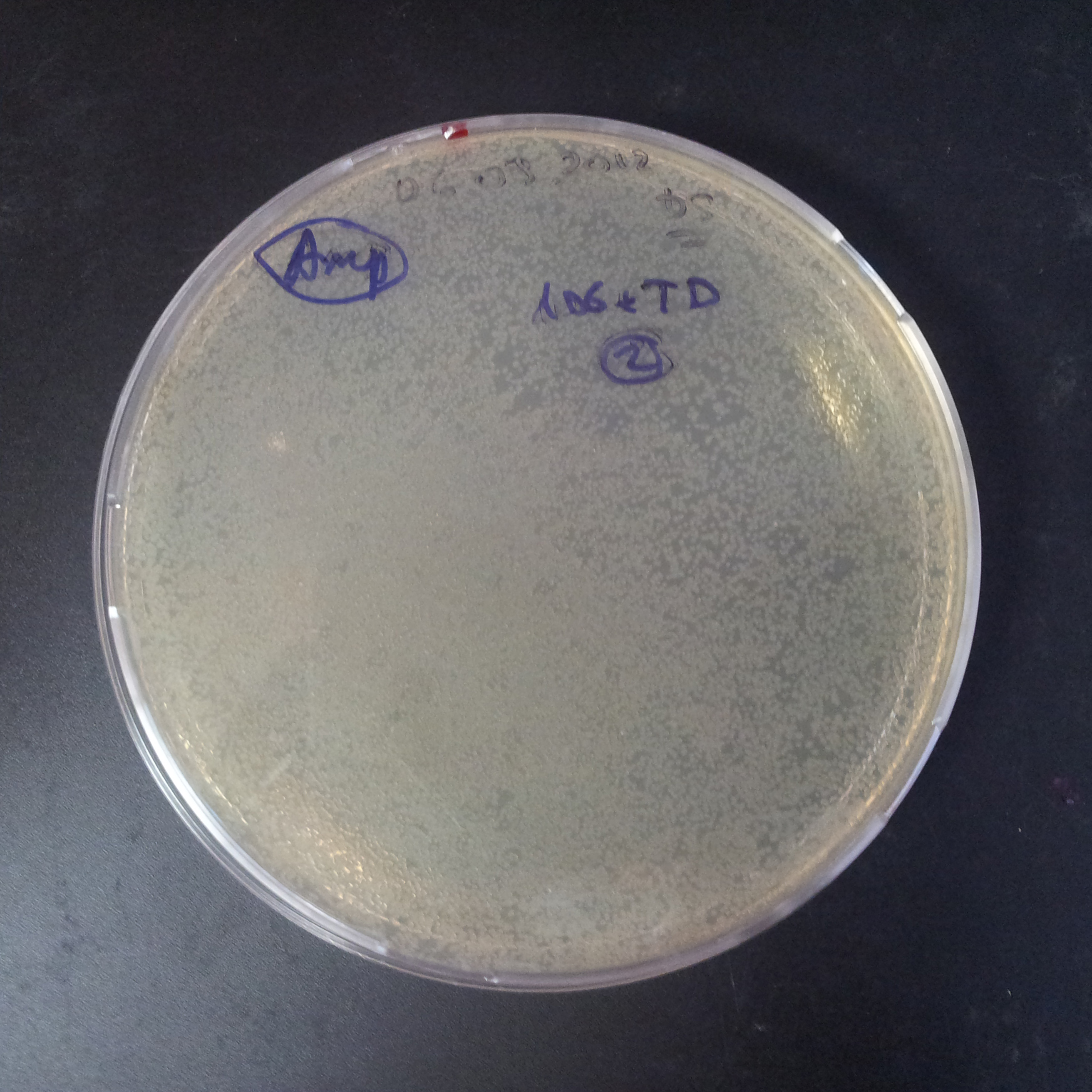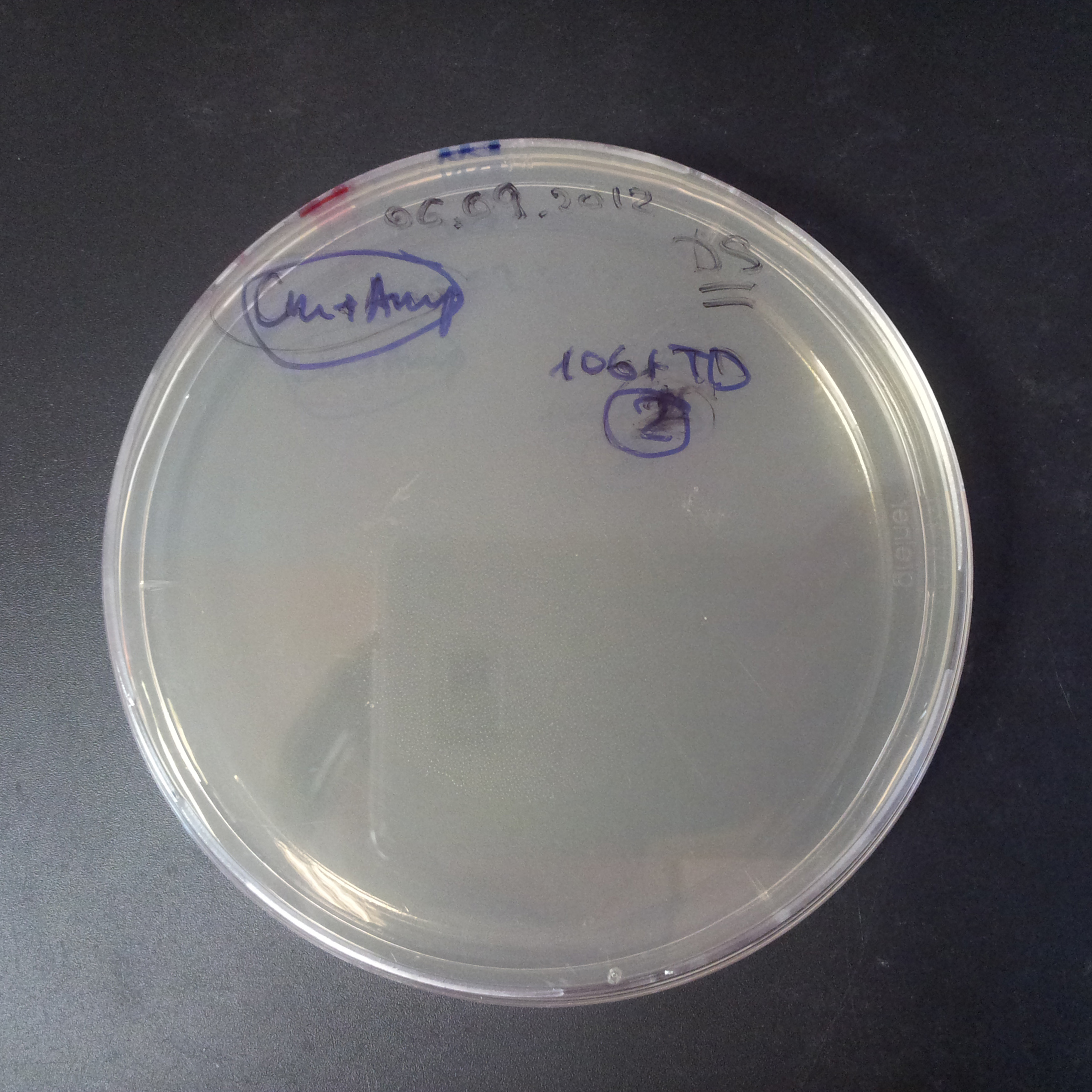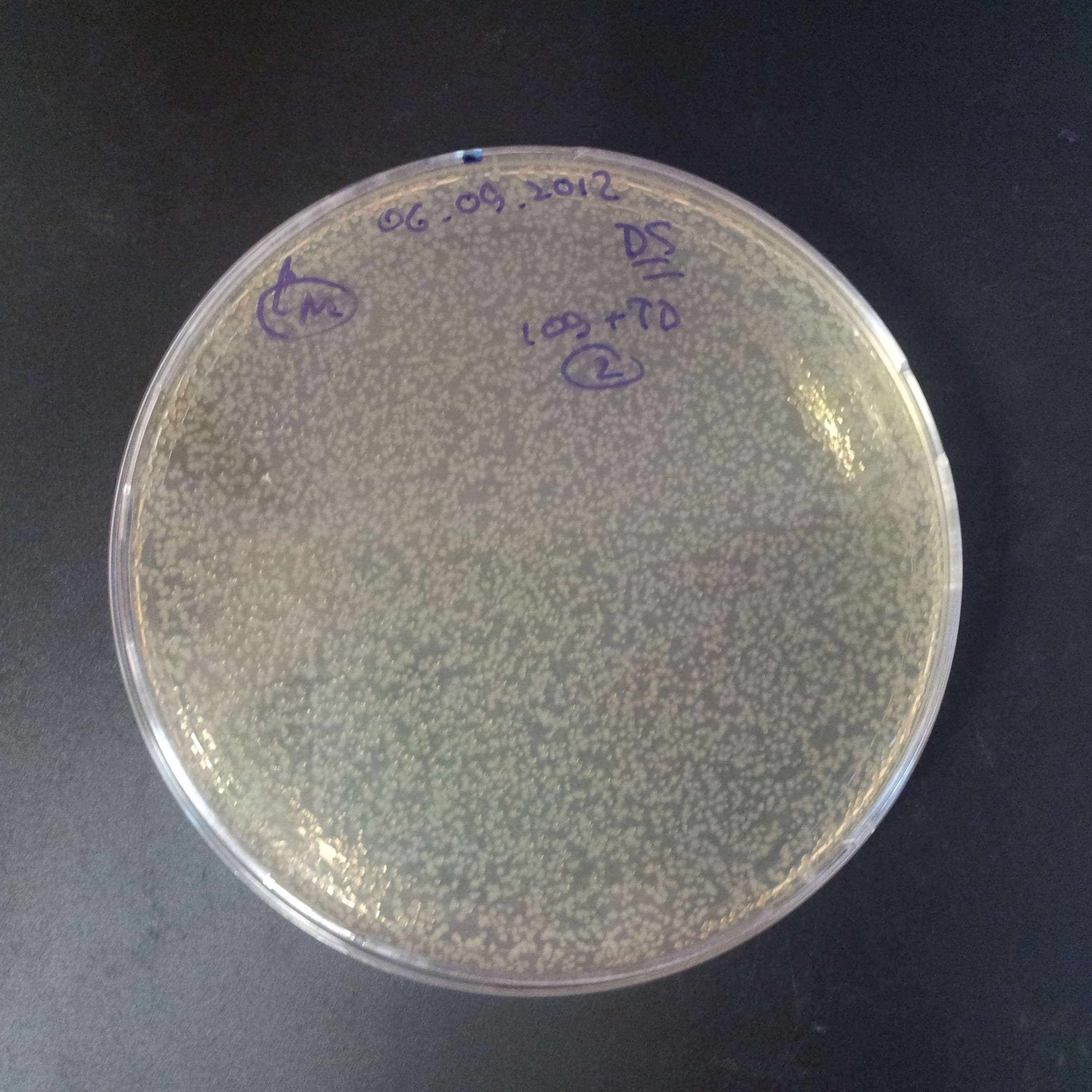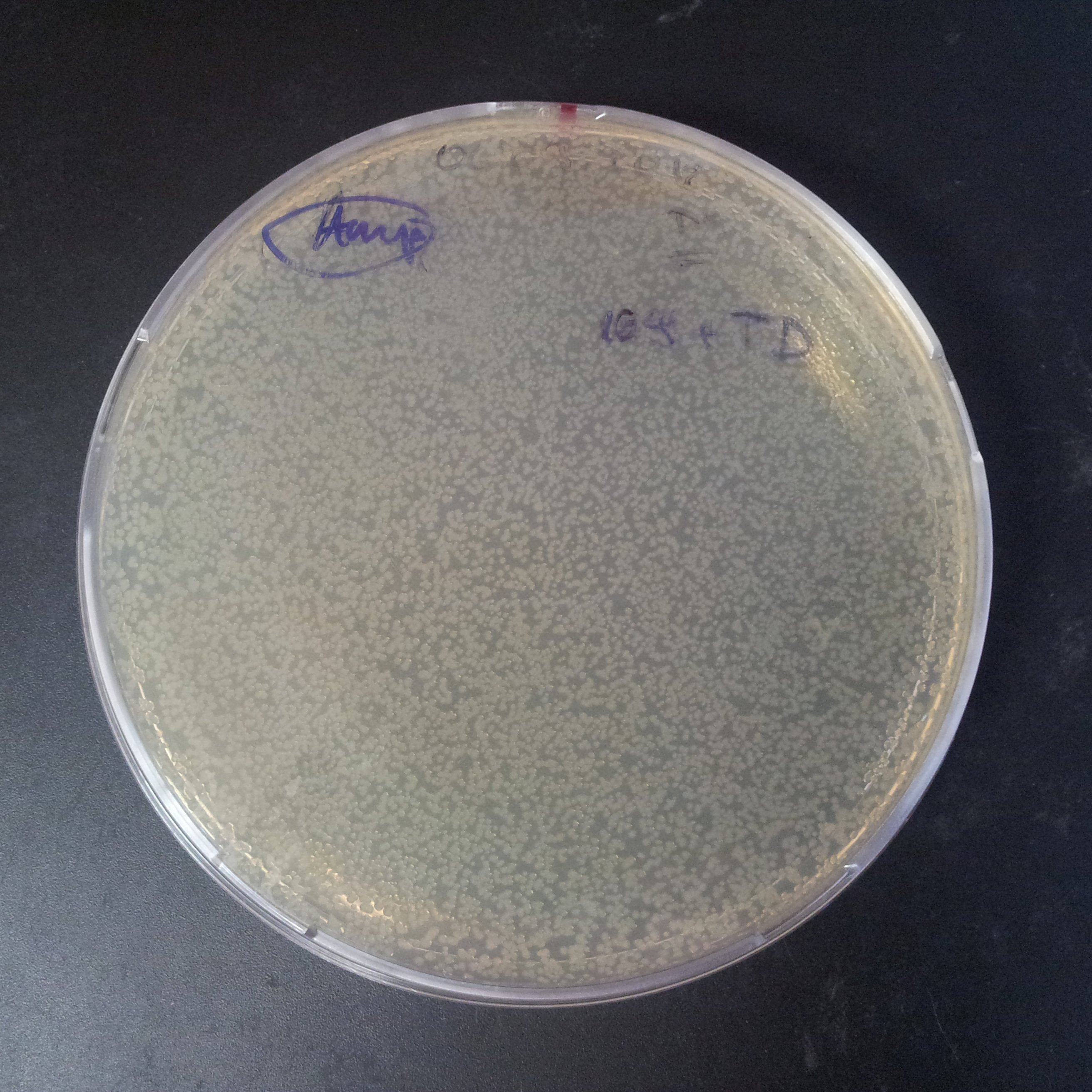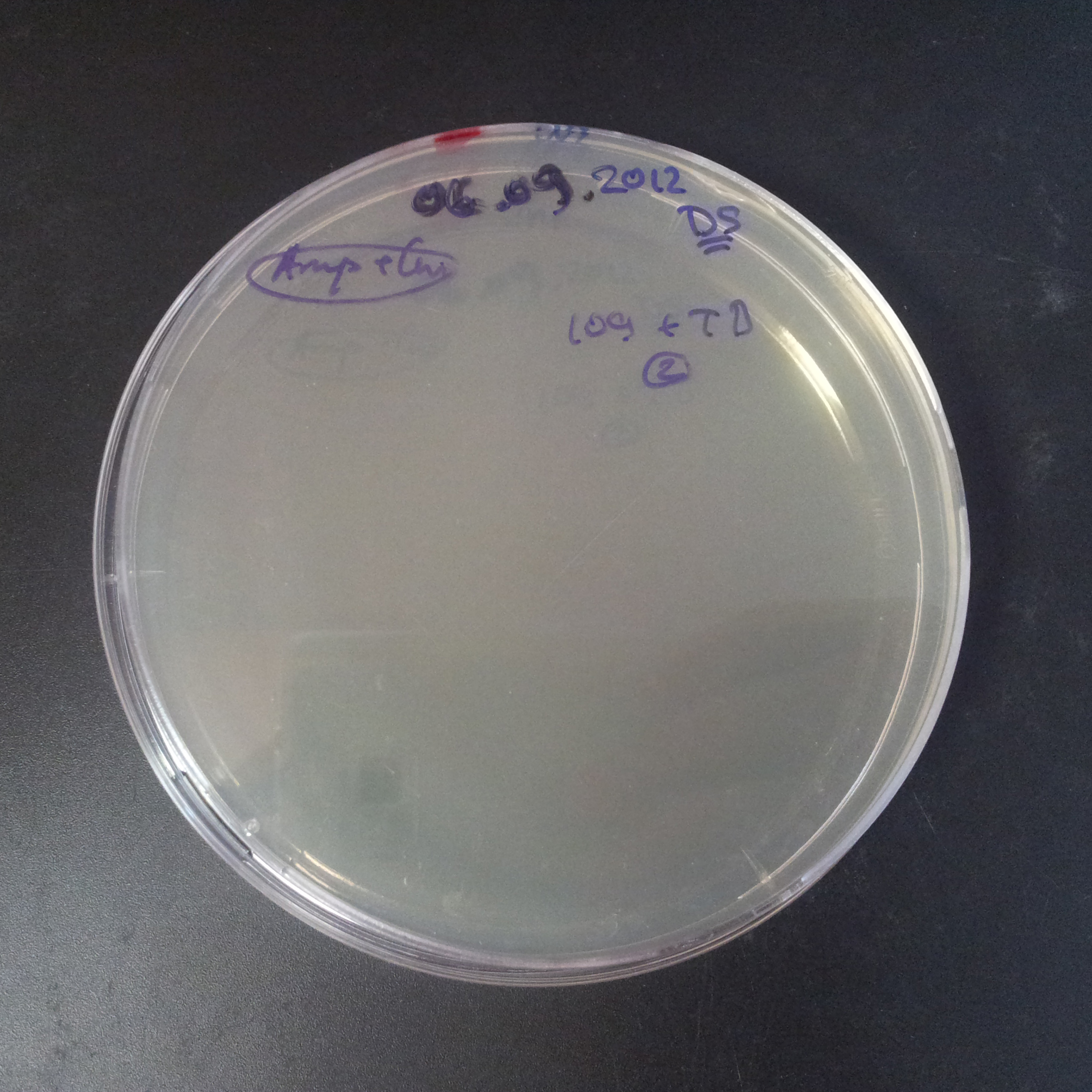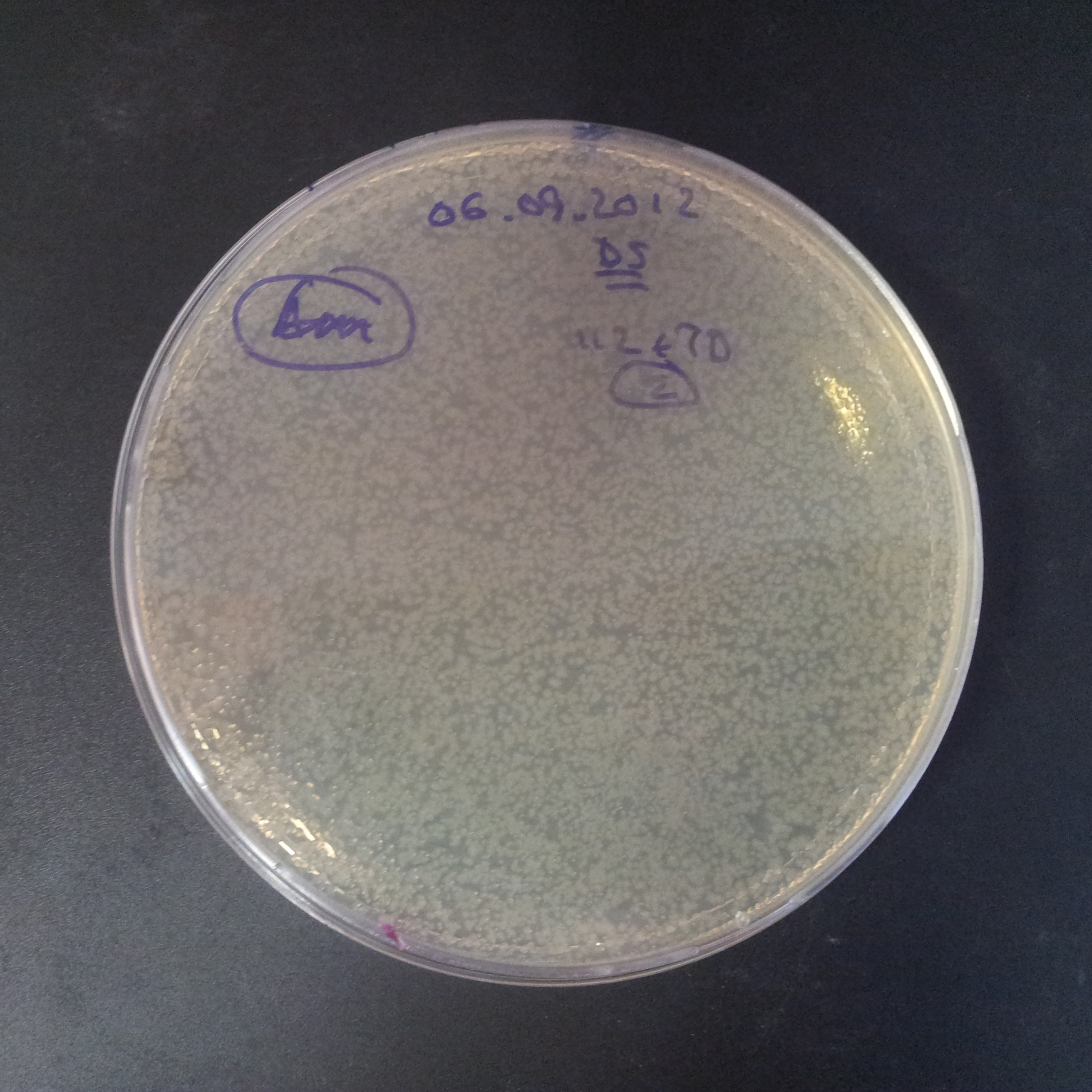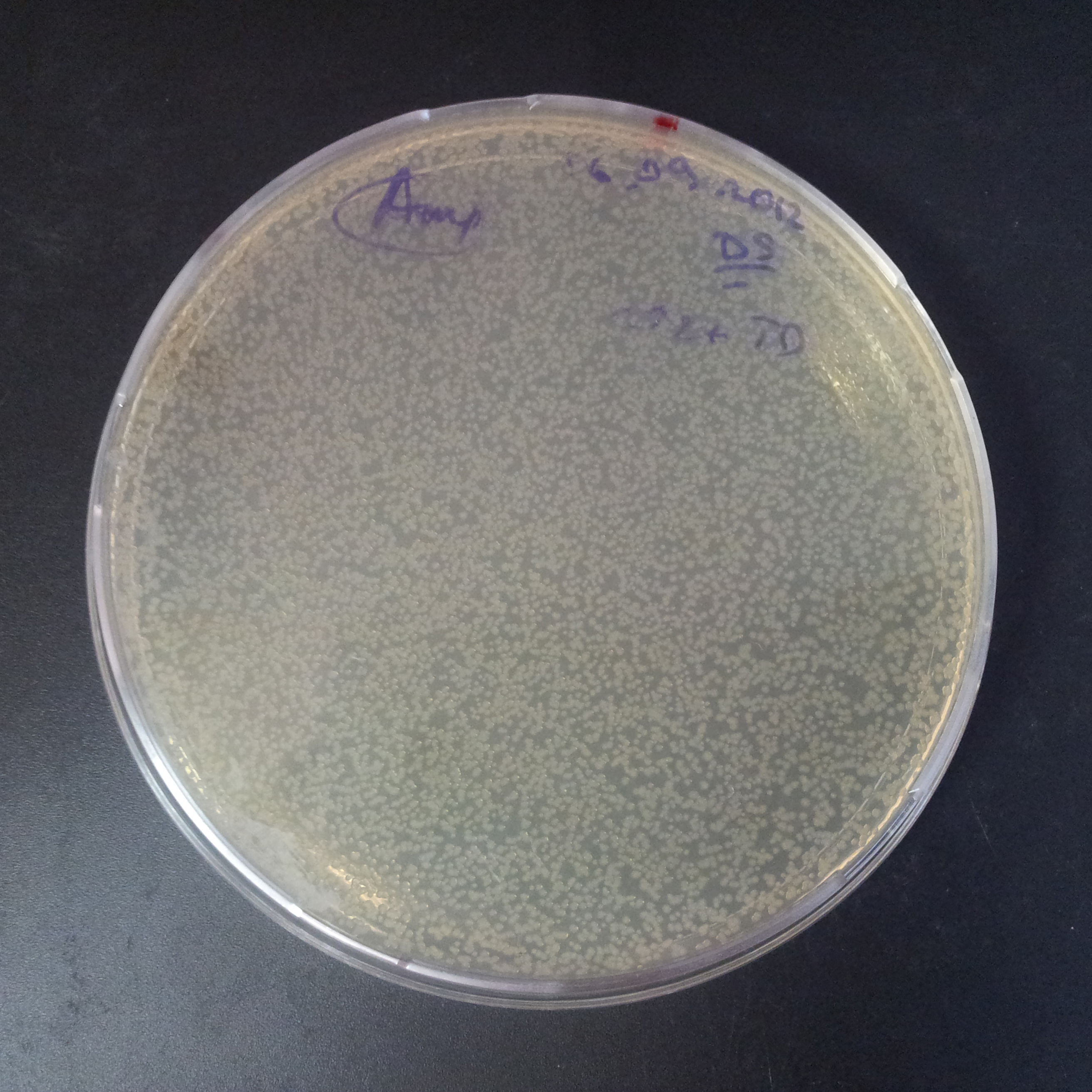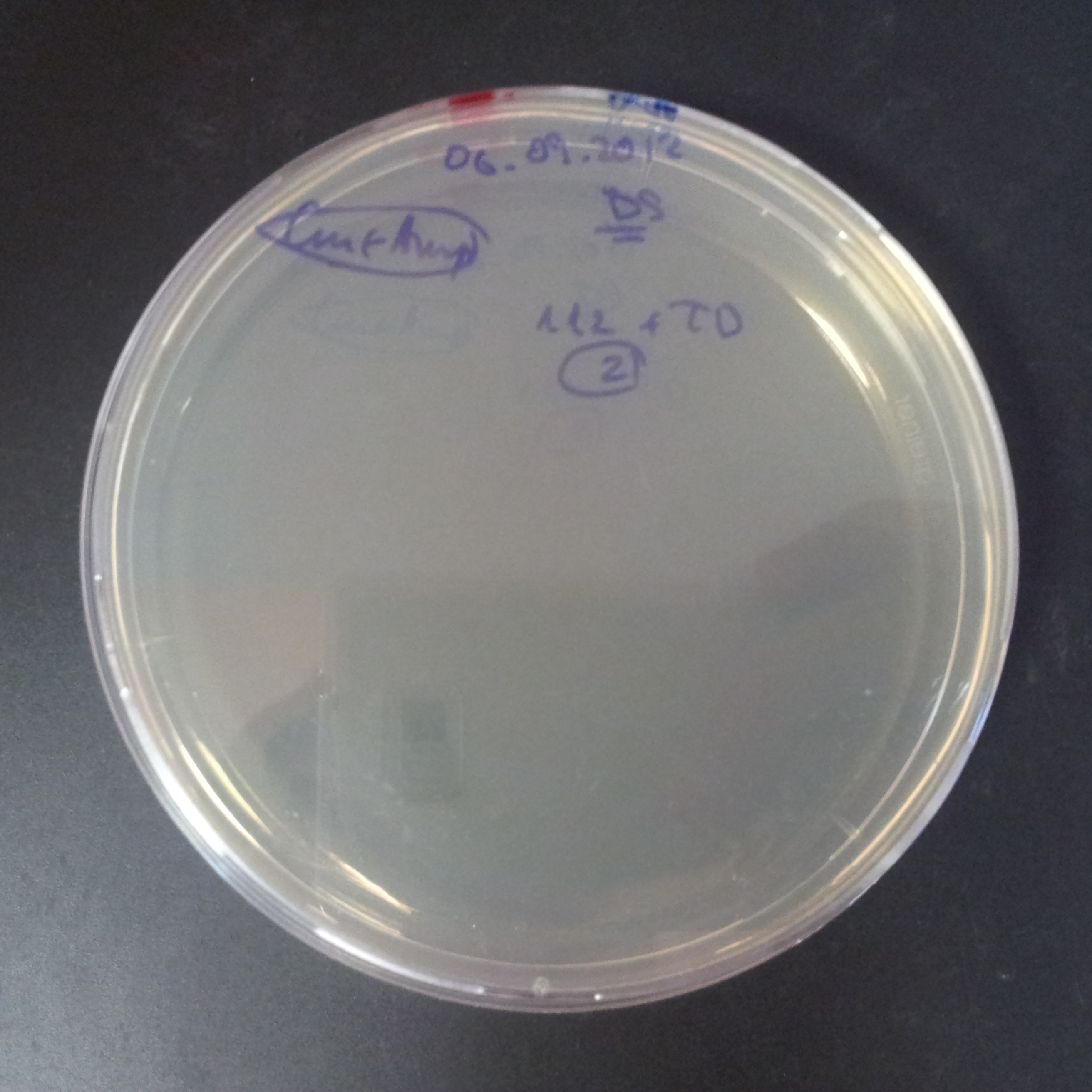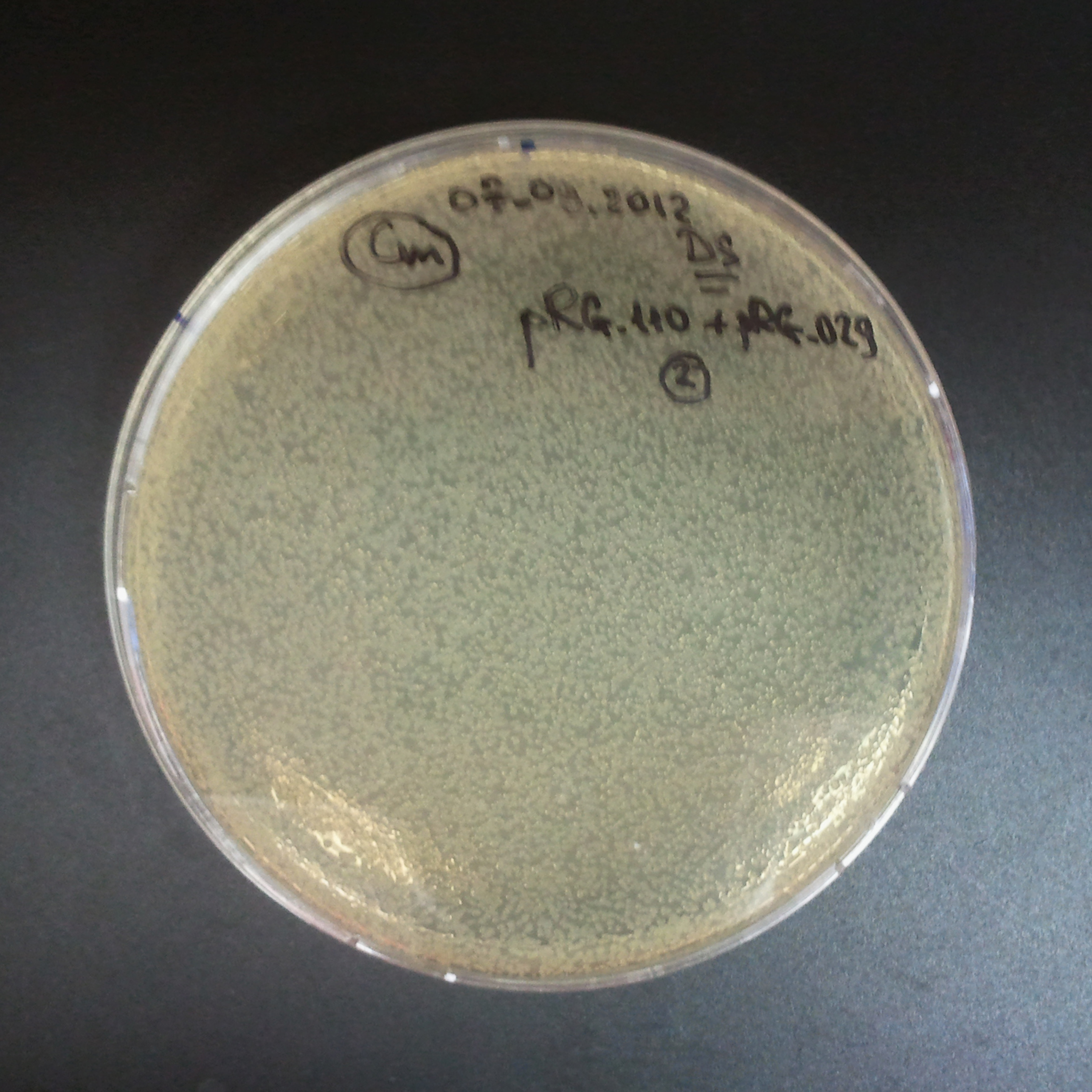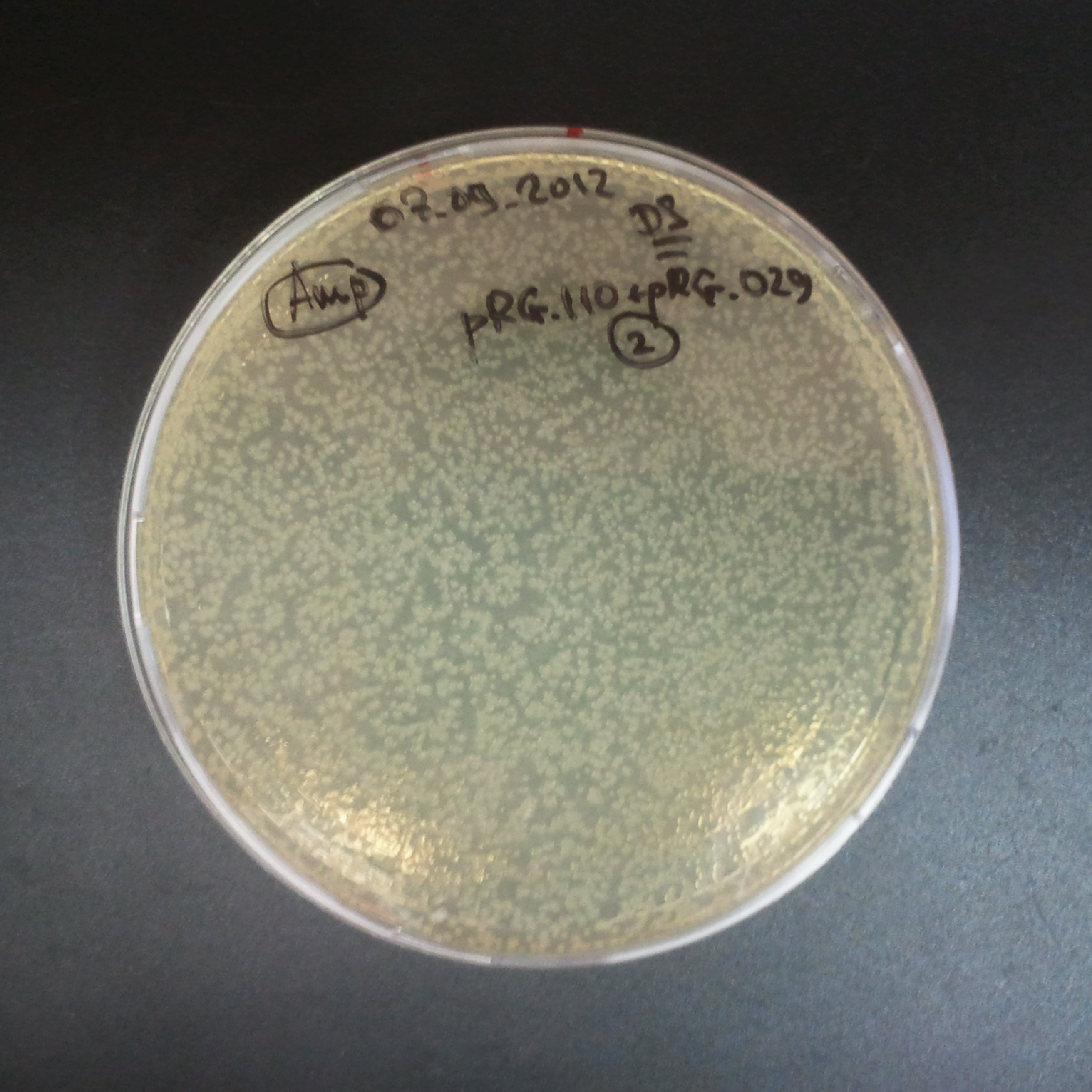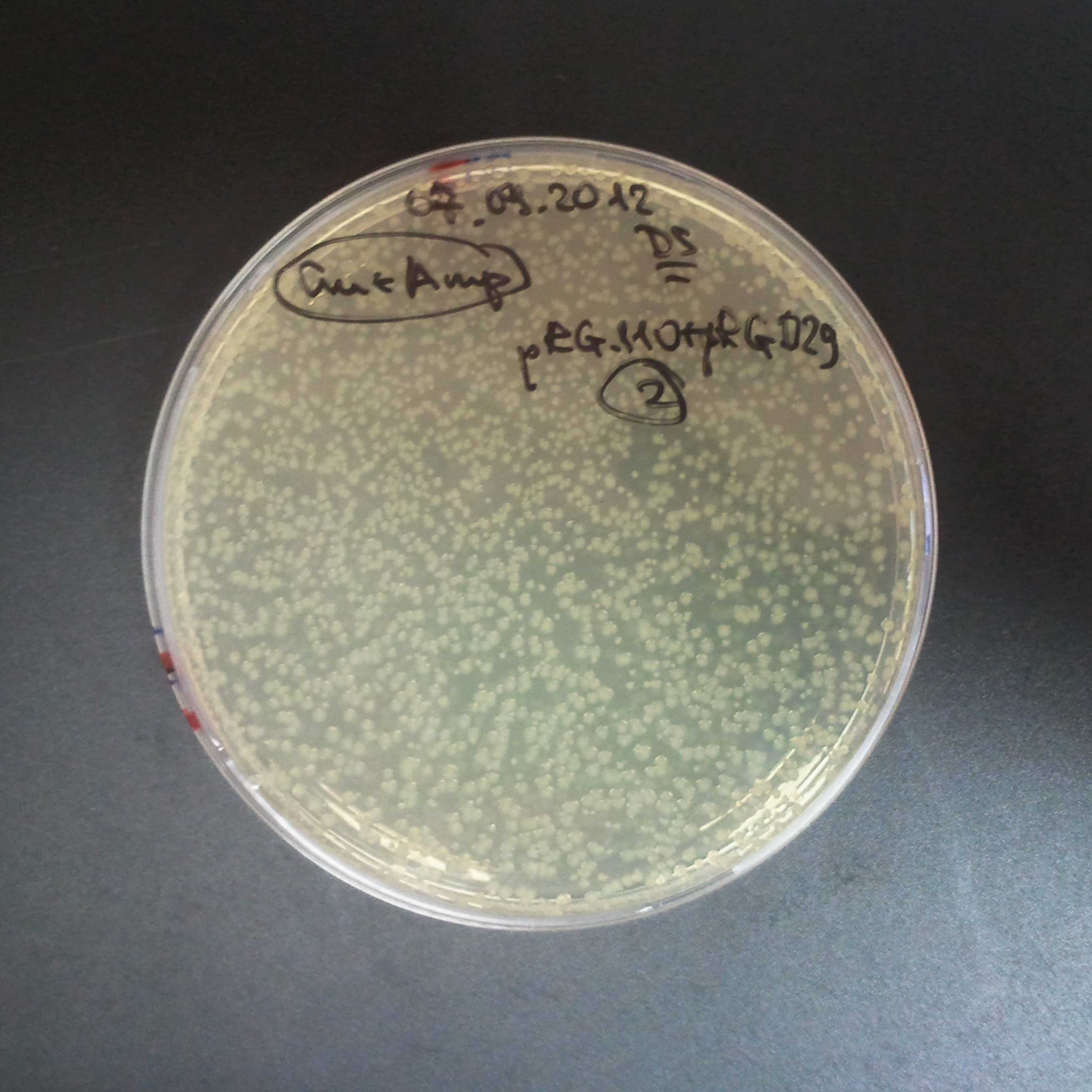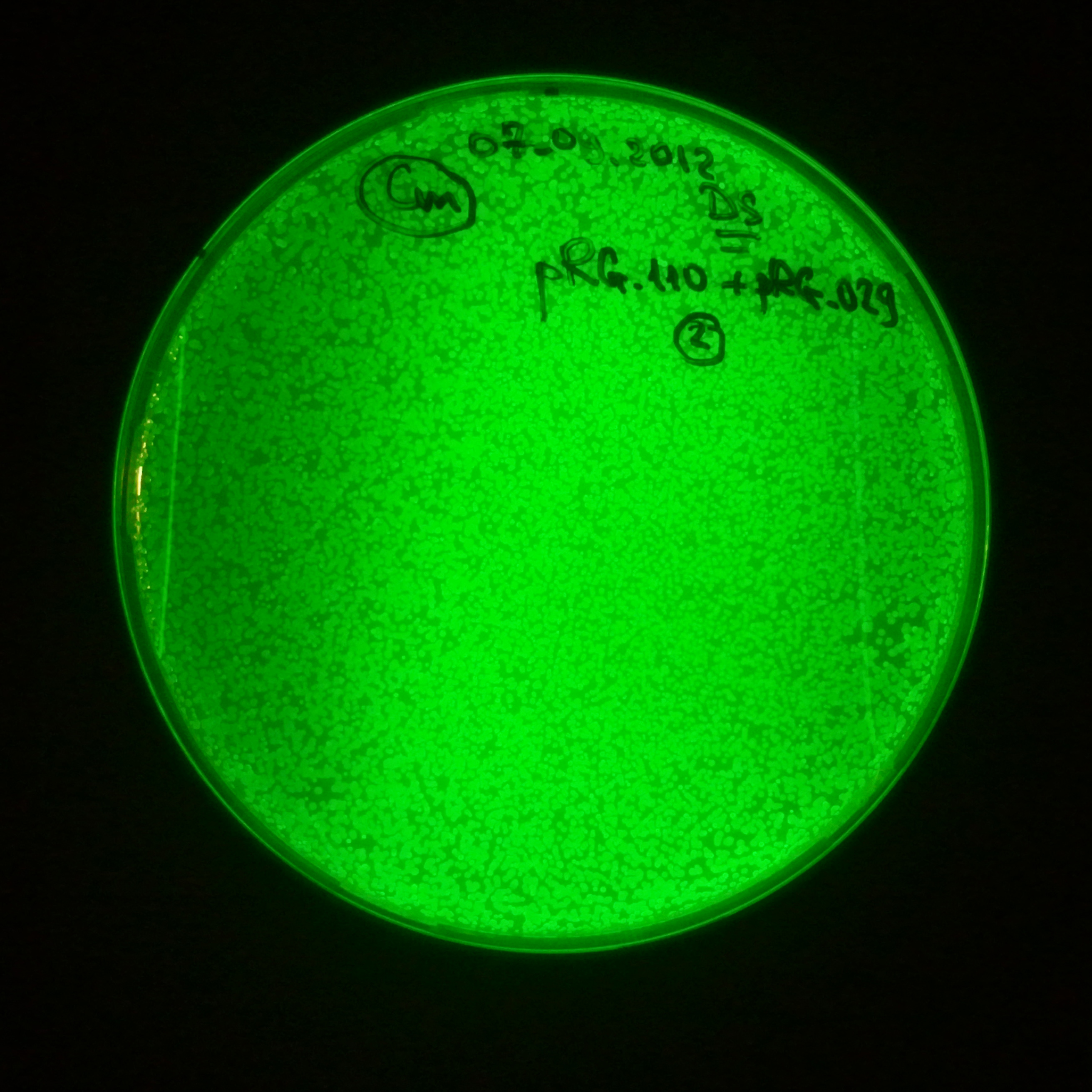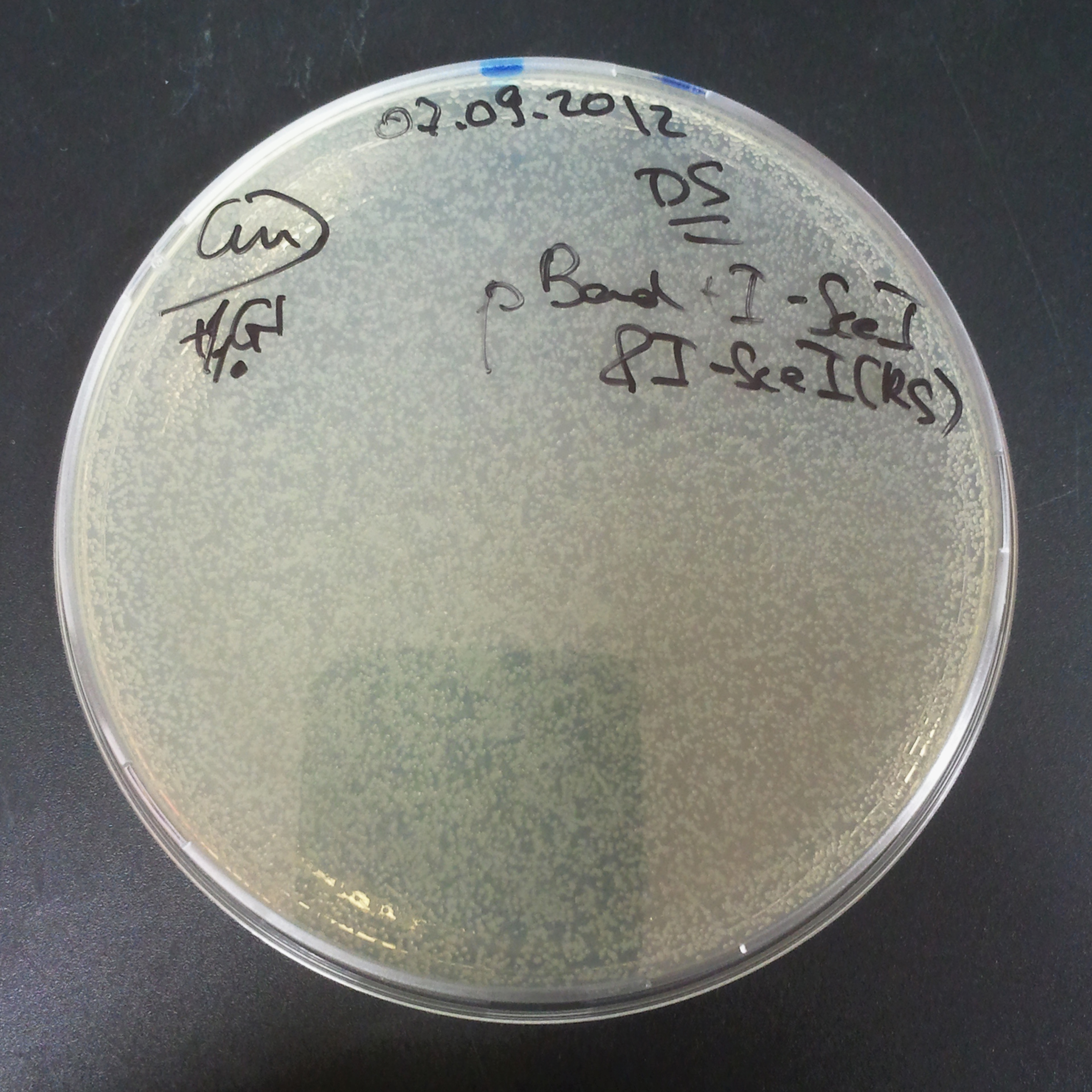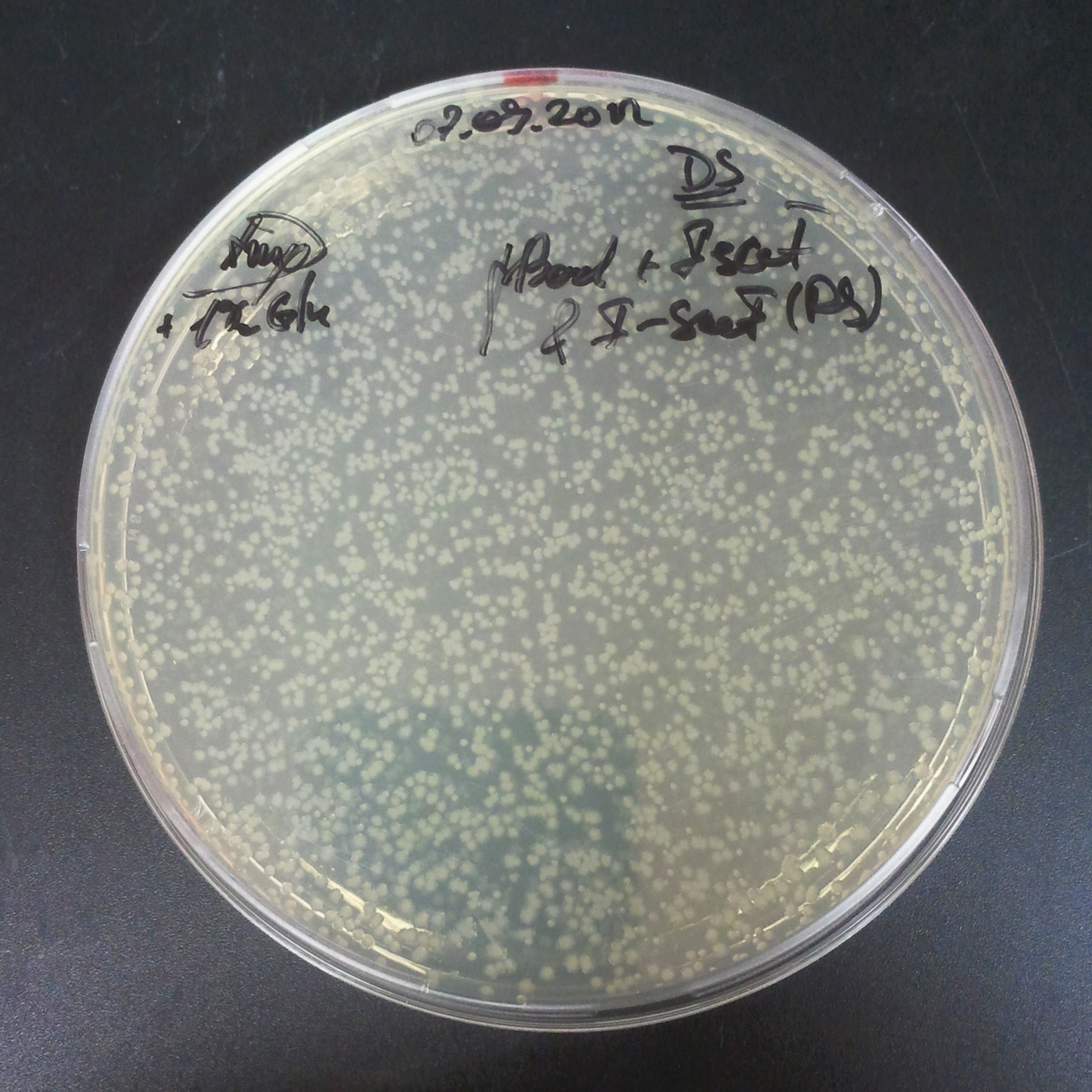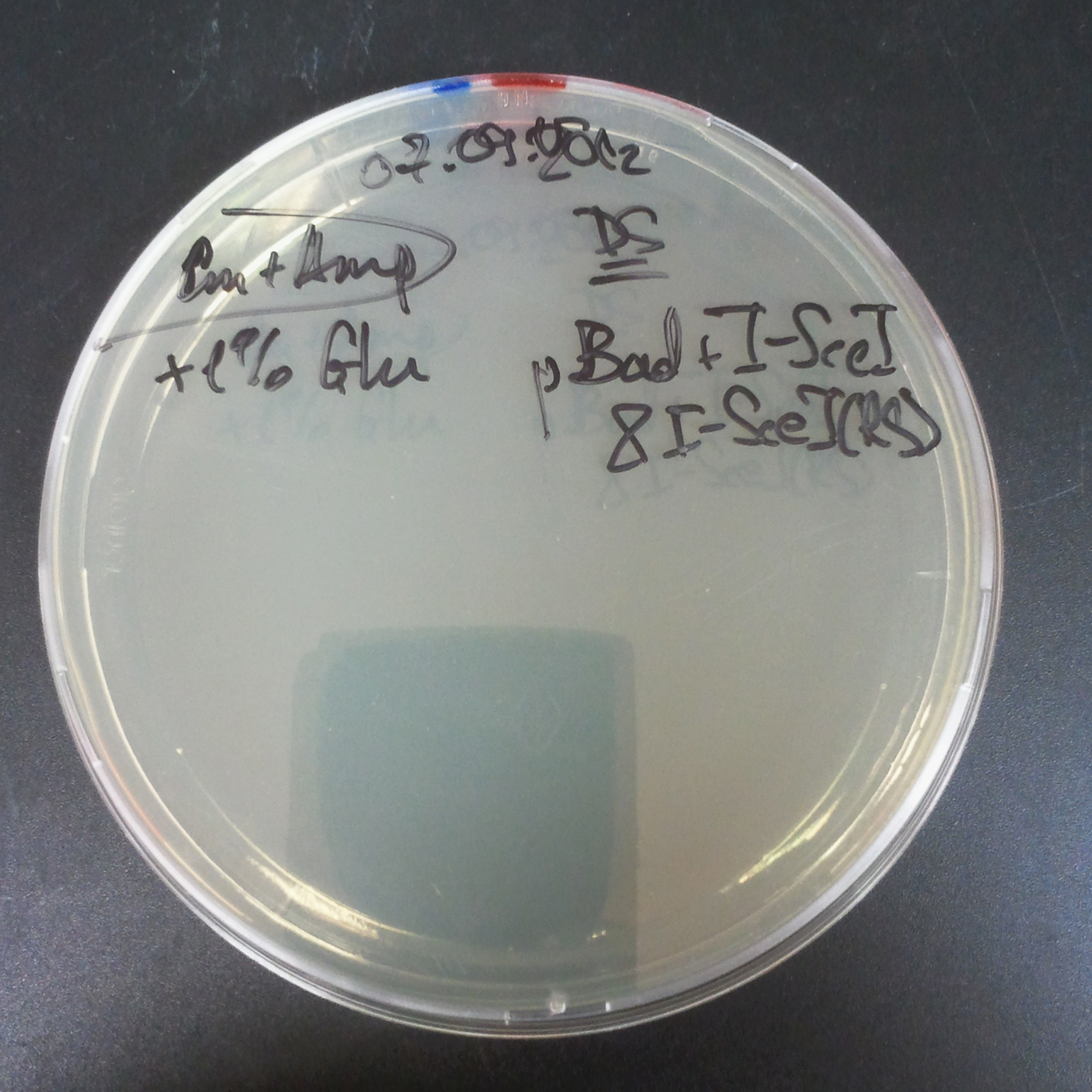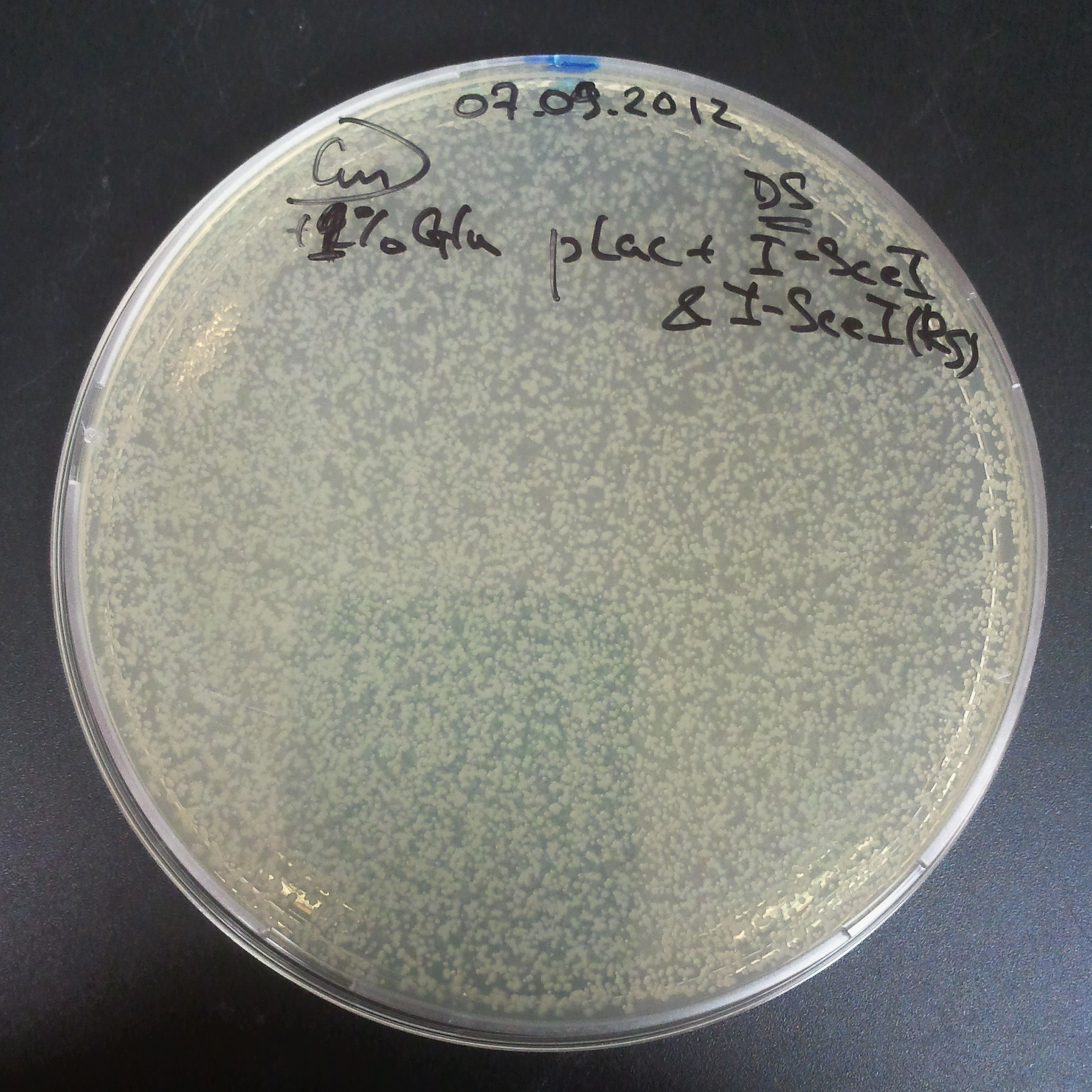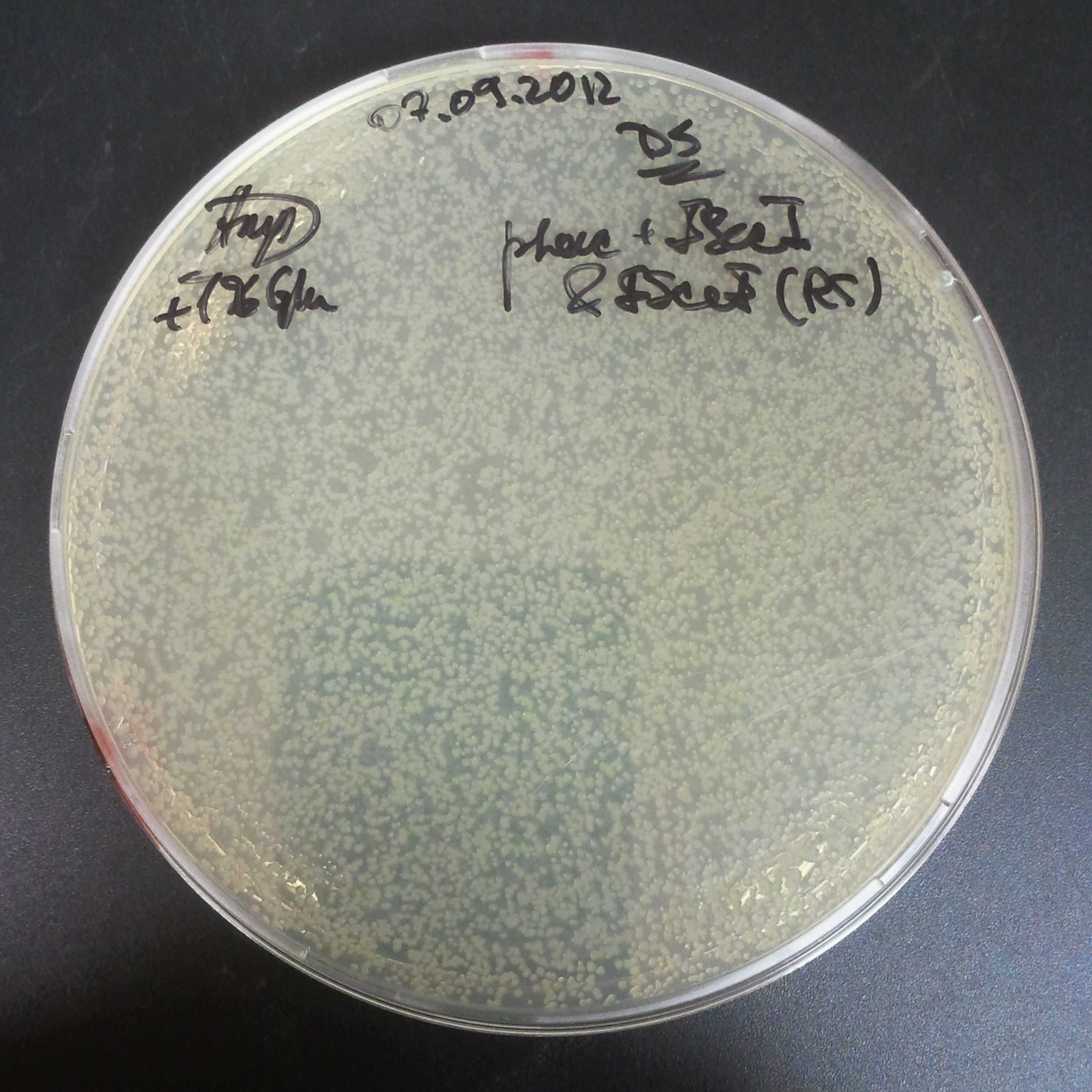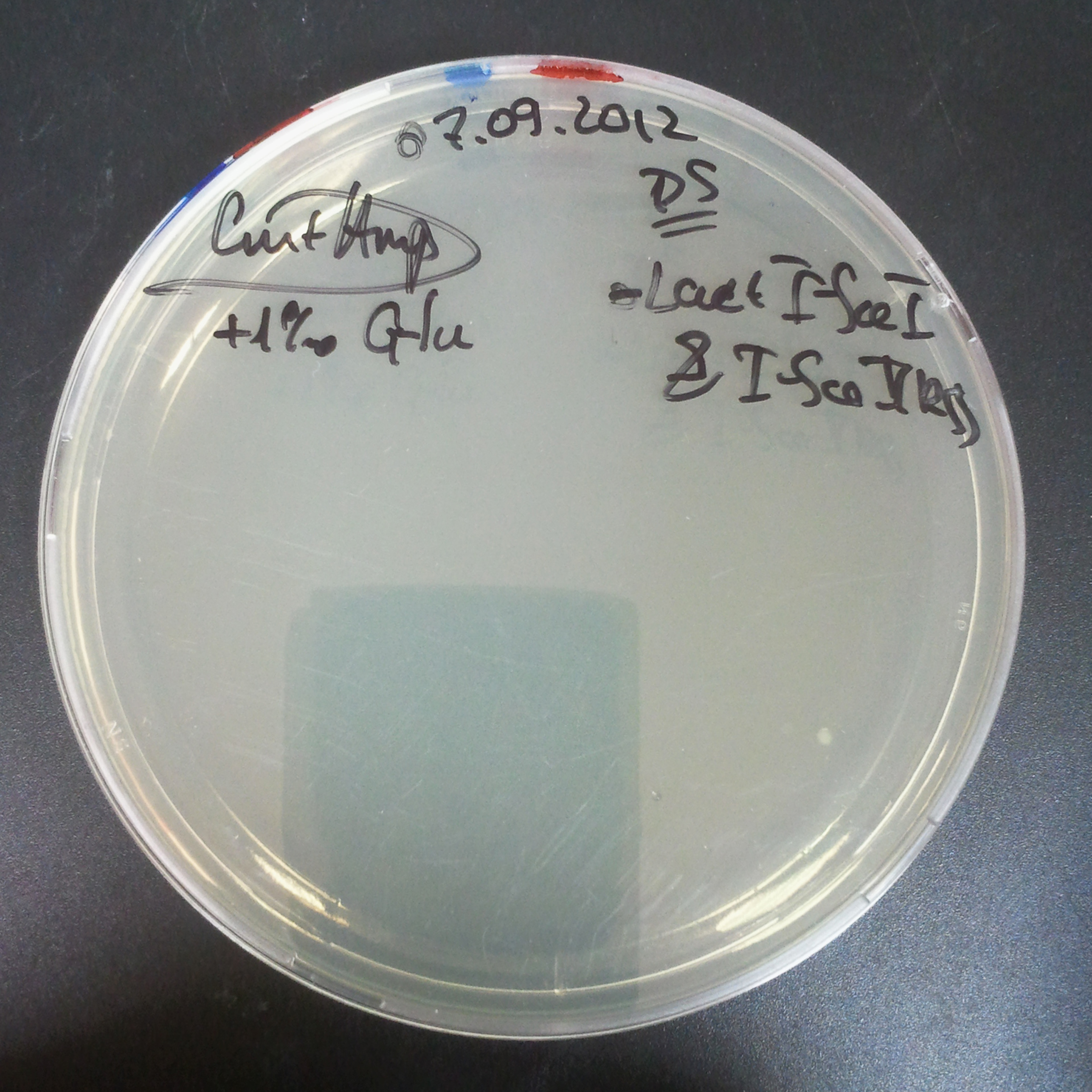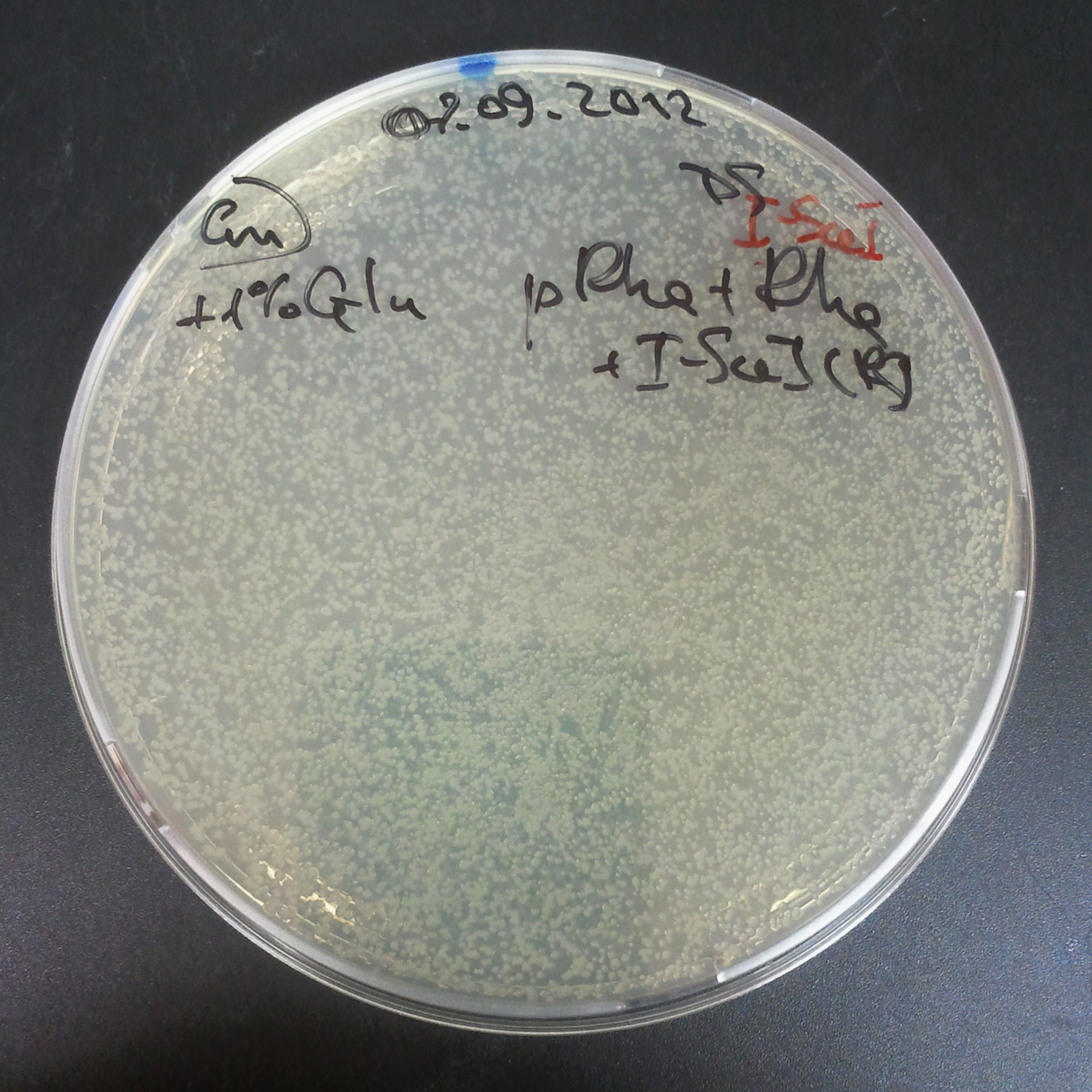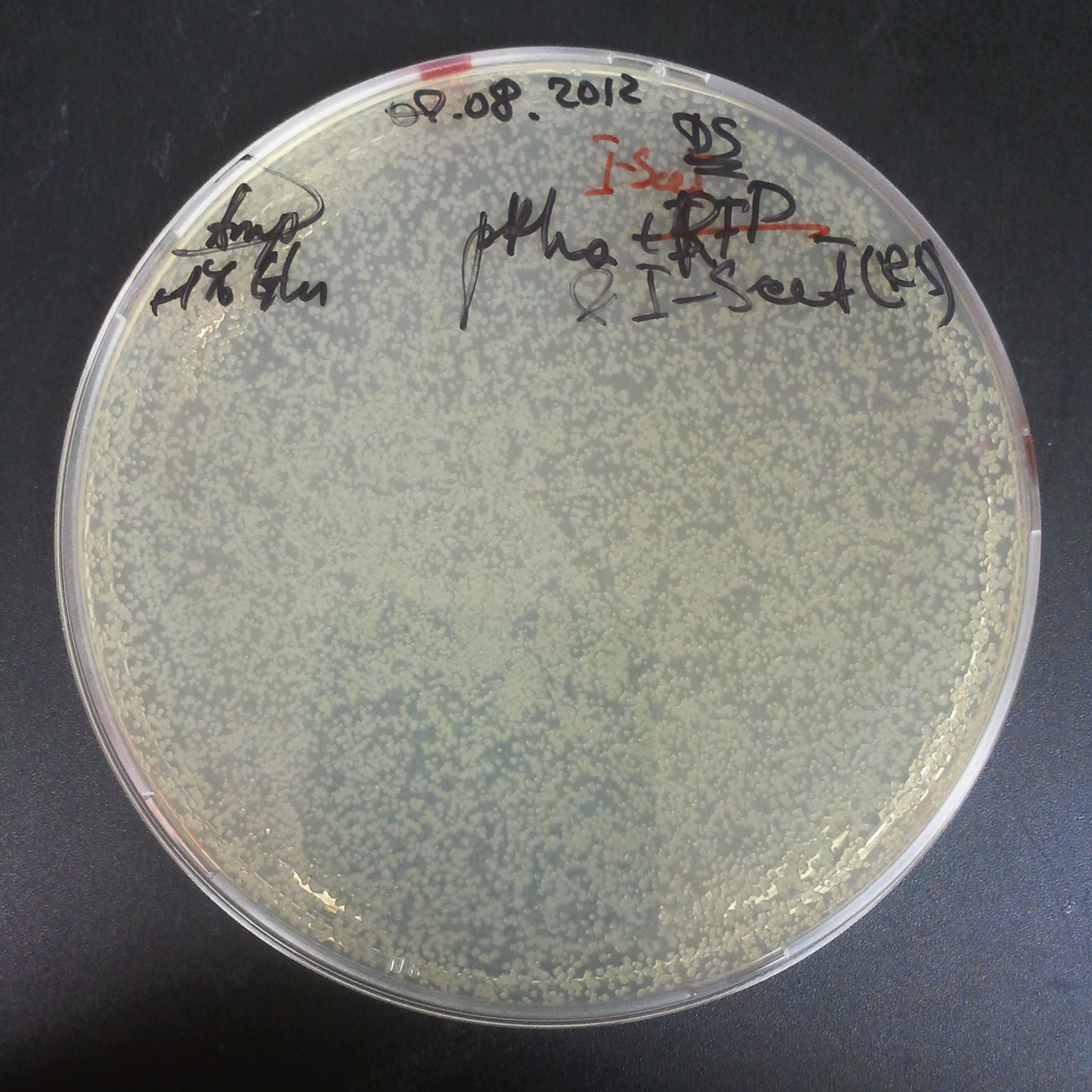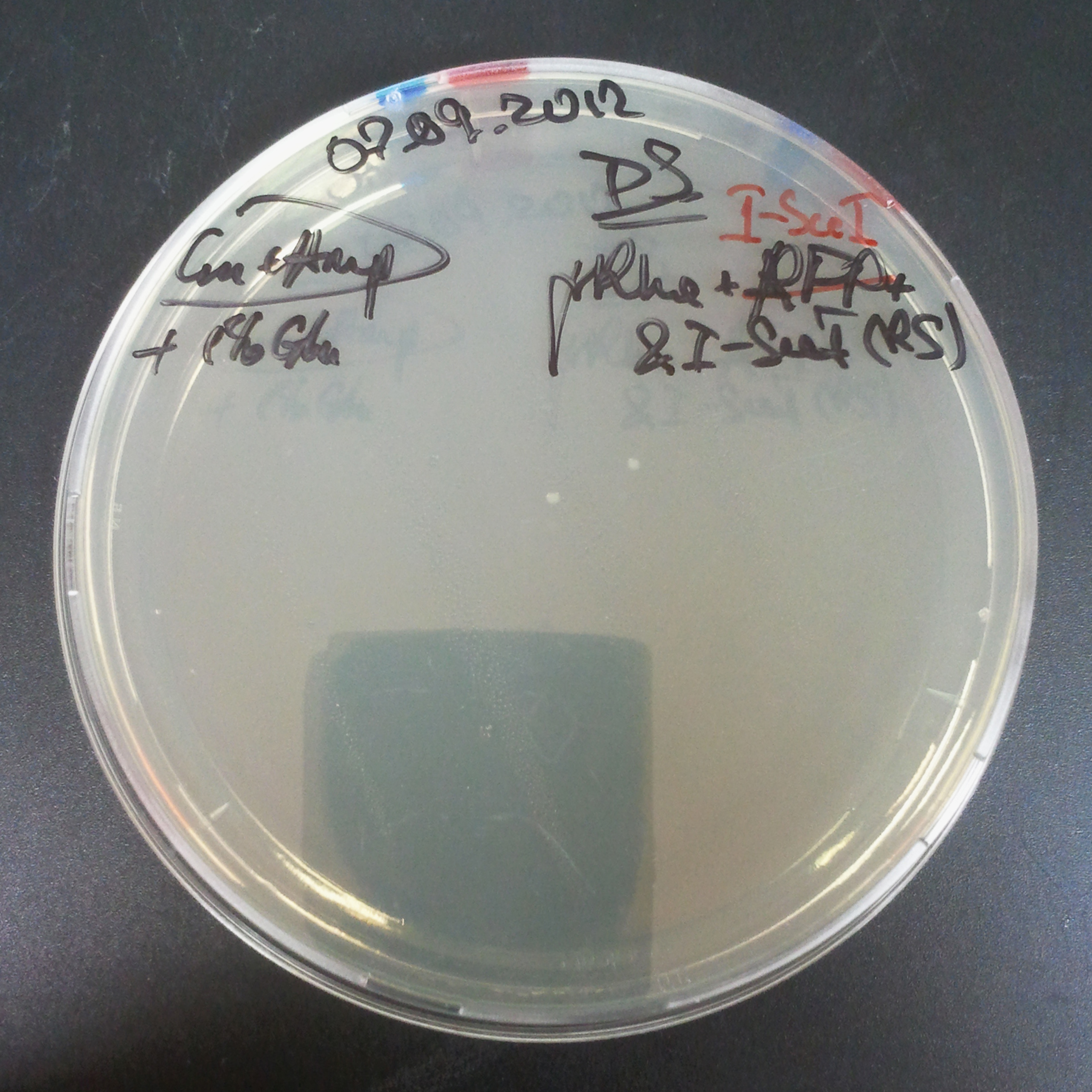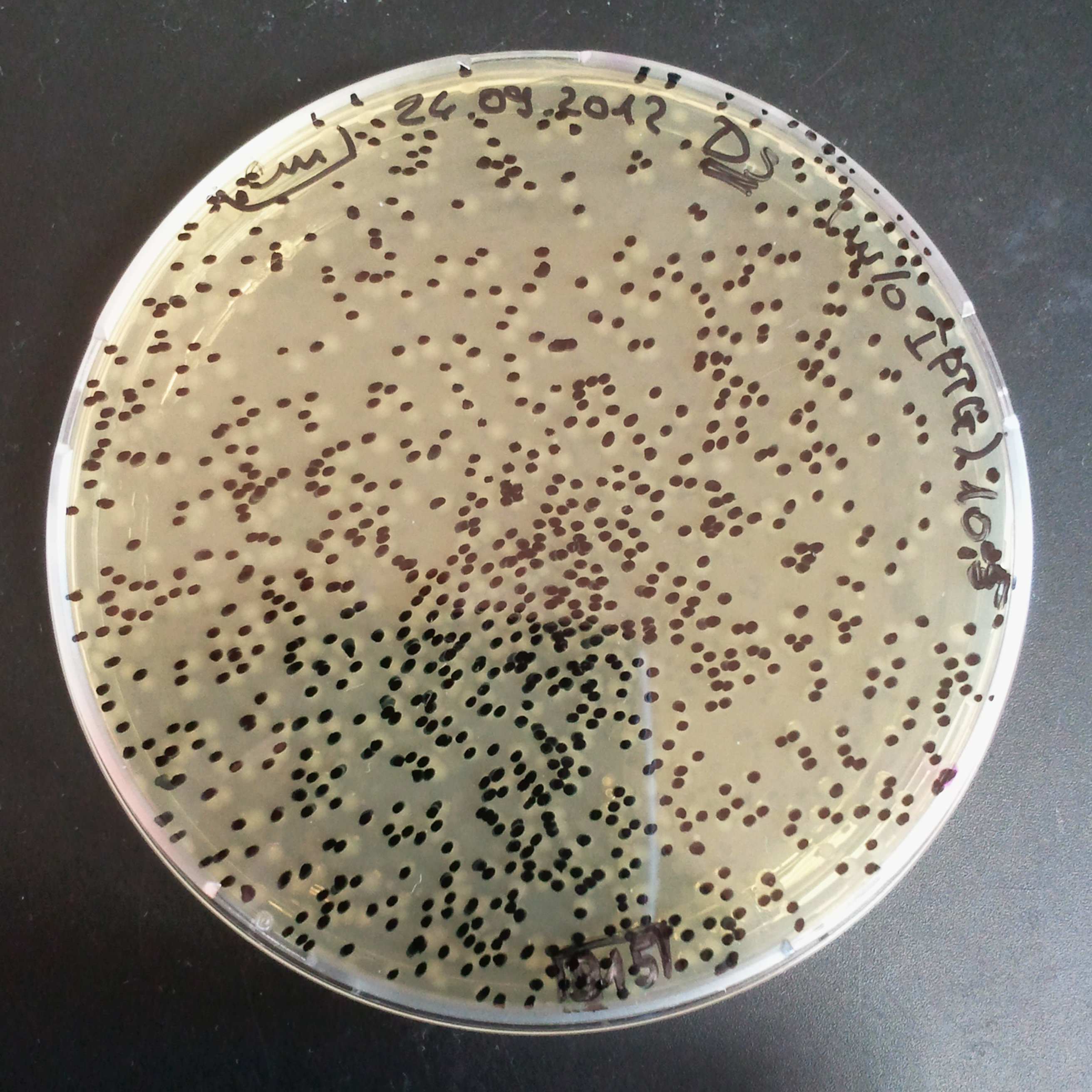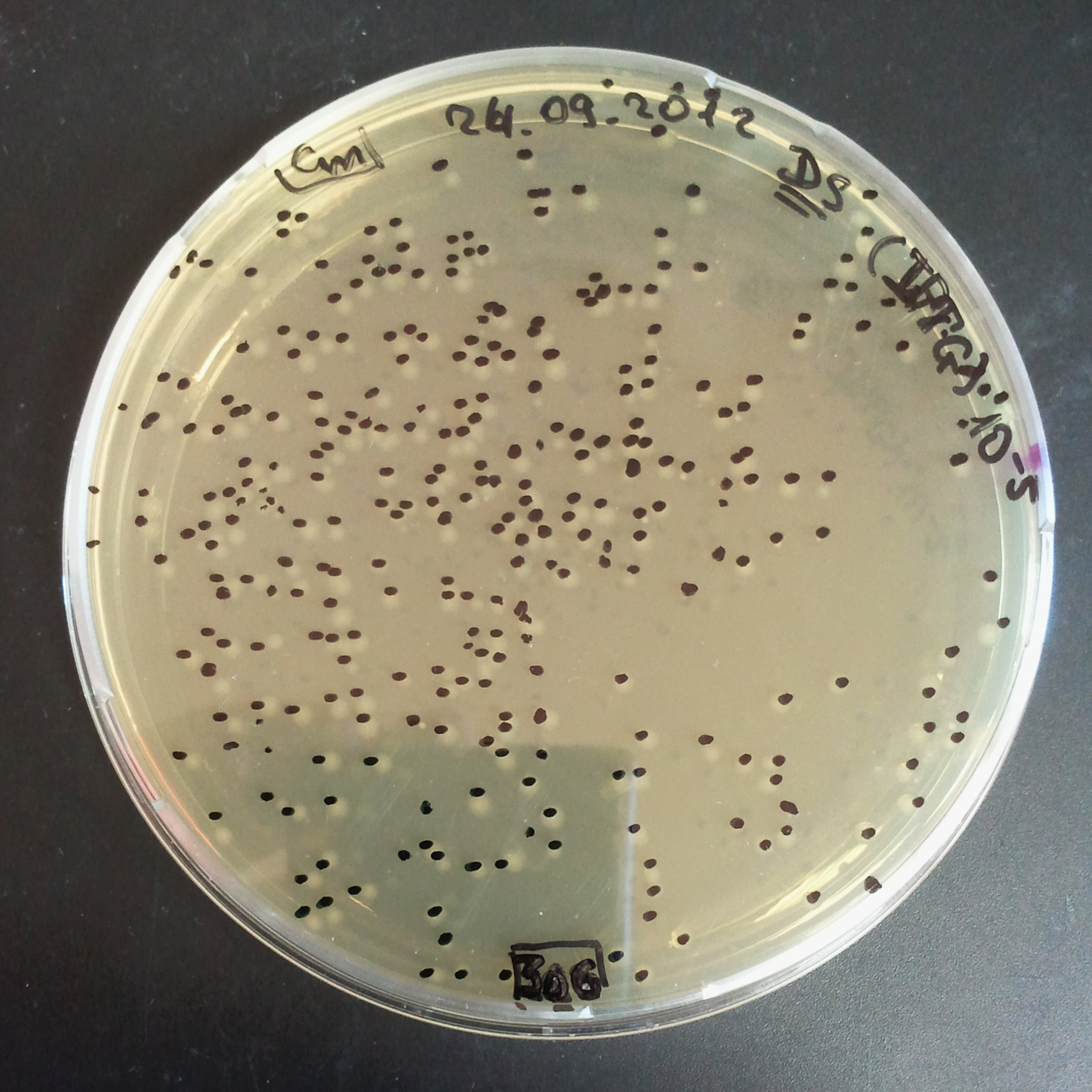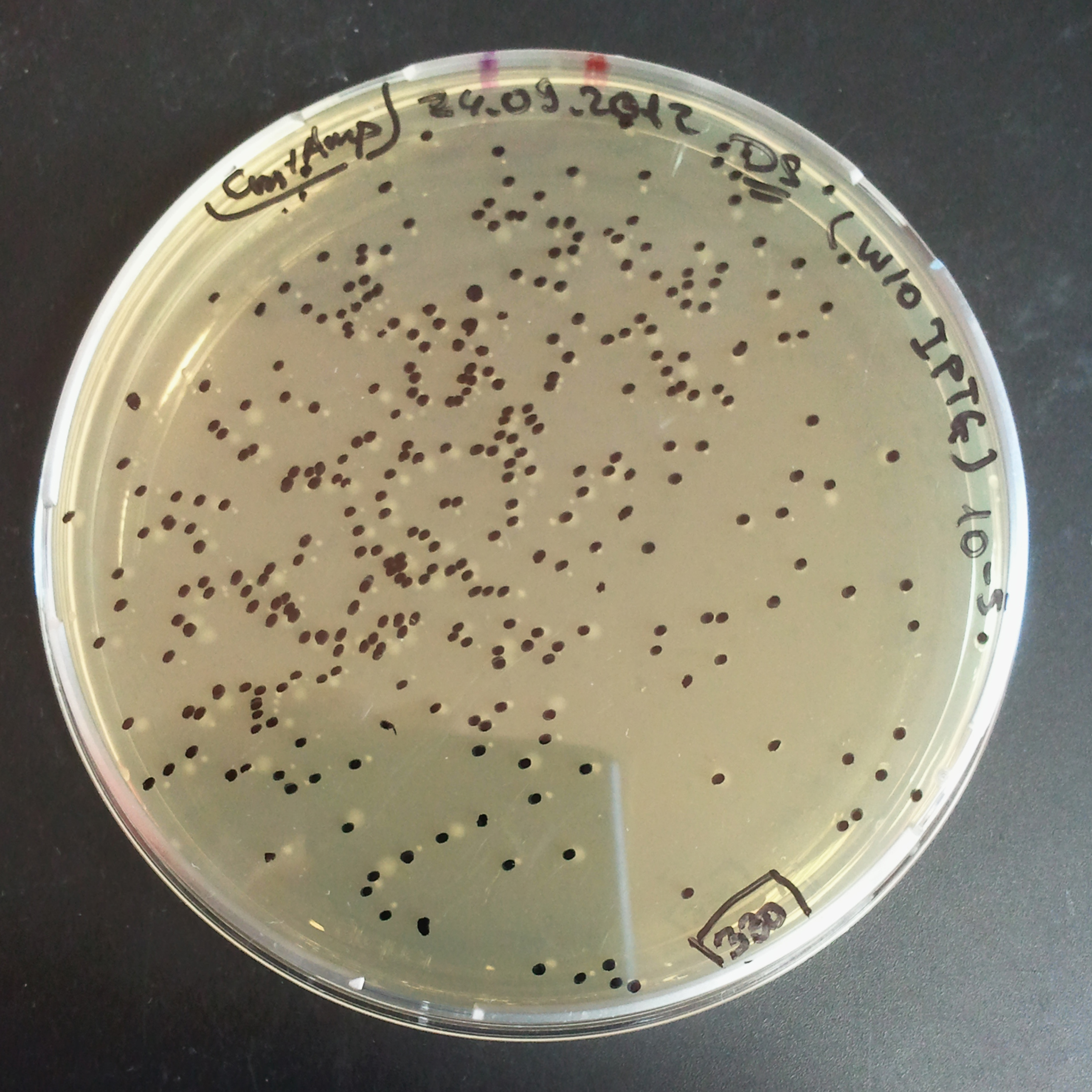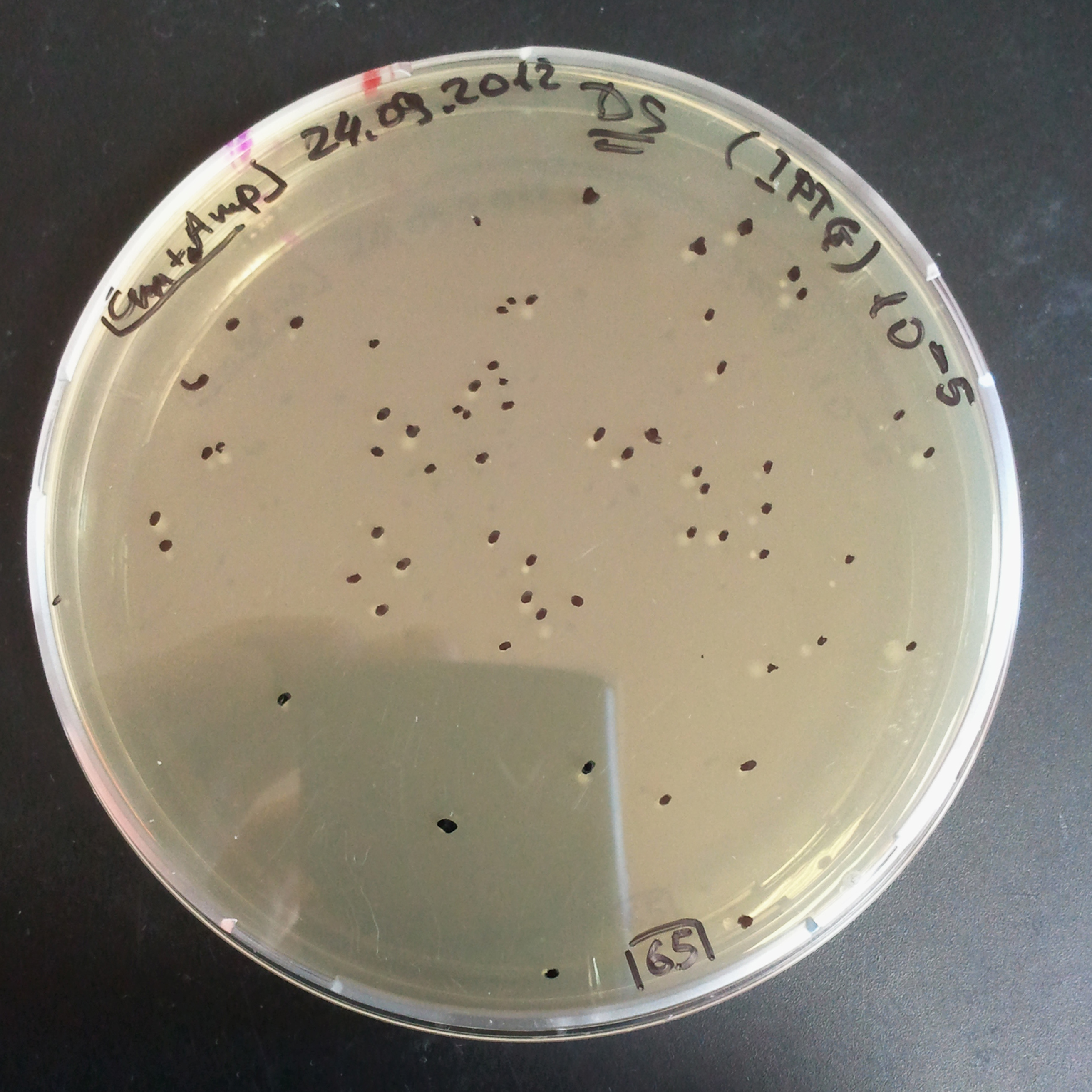Team:Paris Bettencourt/Restriction Enzyme
From 2012.igem.org
(→Mesuring of I-SceI efficiency (TUDelft parts)) |
(→Experimental setup) |
||
| Line 71: | Line 71: | ||
{|align="center" | {|align="center" | ||
|-valign="top" | |-valign="top" | ||
| - | |[[Image:Paris_Bettencourt_2012_RG_Cm_106TUD_2.jpg|thumb|250px|center|Selection: Chloramphenicol plate<br/> First plasmid: pBad & RBS & I-SceI [Cm]<br/>Second plasmid: I-SceI restriction site [Amp]]] | + | |[[Image:Paris_Bettencourt_2012_RG_Cm_106TUD_2.jpg|thumb|250px|center|<font size="1">Selection: Chloramphenicol plate<br/> First plasmid: pBad & RBS & I-SceI [Cm]<br/>Second plasmid: I-SceI restriction site [Amp]</font>]] |
| - | |[[Image:Paris_Bettencourt_2012_RG_Amp_106TUD_2.jpg|thumb|250px|center|Selection: Ampicillin plate<br/> First plasmid: pBad & RBS & I-SceI [Cm]<br/>Second plasmid: I-SceI restriction site [Amp]]] | + | |[[Image:Paris_Bettencourt_2012_RG_Amp_106TUD_2.jpg|thumb|250px|center|<font size="1">Selection: Ampicillin plate<br/> First plasmid: pBad & RBS & I-SceI [Cm]<br/>Second plasmid: I-SceI restriction site [Amp]</font>]] |
| - | |[[Image:Paris_Bettencourt_2012_RG_AmpCm_106TUD_2.jpg|thumb|250px|center|Selection: Chloramphenicol & ampicillin plate<br/> First plasmid: pBad & RBS & I-SceI [Cm]<br/>Second plasmid: I-SceI restriction site [Amp]]] | + | |[[Image:Paris_Bettencourt_2012_RG_AmpCm_106TUD_2.jpg|thumb|250px|center|<font size="1">Selection: Chloramphenicol & ampicillin plate<br/> First plasmid: pBad & RBS & I-SceI [Cm]<br/>Second plasmid: I-SceI restriction site [Amp]</font>]] |
|- | |- | ||
|[[Image:Paris_Bettencourt_2012_RG_Cm_109TUD_2.jpg|thumb|250px|center|Chloramphenicol plate]] | |[[Image:Paris_Bettencourt_2012_RG_Cm_109TUD_2.jpg|thumb|250px|center|Chloramphenicol plate]] | ||
Revision as of 11:51, 25 September 2012
Contents |
Overview
Our group was responsible for designing self-plasmid digestion system. This synthetic system allows to digest plasmids into linear parts of DNA which afterwards could be degraded by Colicin.
Objectives
- To find appropriate restriction enzymes which have to match the next properties:
- In the E.Coli genome there is no restriction sites of a choosen restriction enzyme;
- It has to have high specifity;
- It have to works in wide range of different conditions (pH, T°C, etc)
- Choose very strong promoter to regulate restriction enzyme expression;
- To clone circuits with different combinations of choosen restriction enzymes and promoters.
- Mesure degradation efficiency of restriction enzime for each circuit.
- Based on the best combinantion design self-disruption plasmid.
Design
Restriction ensime candidates
Fse I
Fse I - restriction endonucleases which recognize 8bp long DNA sequence: GGCCGG▽CC (CC△GGCCGG). The most important to methion that it has the lowest number of restriction sites in E.Coli genome: only 4 copies. We decided to use MAGE to remove it from chromosome (see for more detiles), but after MAGE did not have the expected yield, we decided to stop it and works only wuth the next candidate.
I-SceI
Promoter candidates:
pLac
pBad
pRha
L-rhamnose-inducible promoter is capable of high-level recombinant protein expression in the presence of L-rhamnose, it is also tightly regulated in the absence of L-rhamnose by the addition of D-glucose.
L-rhamnose is taken up by the RhaT transport system, converted to L-rhamnulose by an isomerase RhaA and then phosphorylated by a kinase RhaB. Subsequently, the resulting rhamnulose-1-phosphate is hydrolyzed by an aldolase RhaD into dihydroxyacetone phosphate, which is metabolized in glycolysis, and L-lactaldehyde. The latter can be oxidized into lactate under aerobic conditions and be reduced into L-1,2-propanediol under unaerobic conditions.
The genes rhaBAD are organized in one operon which is controlled by the rhaPBAD promoter. This promoter is regulated by two activators, RhaS and RhaR, and the corresponding genes belong to one transcription unit which is located in opposite direction of rhaBAD. If L-rhamnose is available, RhaR binds to the rhaPRS promoter and activates the production of RhaR and RhaS. RhaS together with L-rhamnose in turn binds to the rhaPBAD and the rhaPT promoter and activates the transcription of the structural genes. However, for the application of the rhamnose expression system it is not necessary to express the regulatory proteins in larger quantities, because the amounts expressed from the chromosome are sufficient to activate transcription even on multi-copy plasmids. Therefore, only the rhaPBAD promoter has to be cloned upstream of the gene that is to be expressed. Full induction of rhaBAD transcription also requires binding of the CRP-cAMP complex, which is a key regulator of catabolite repression.
As result we decided to clone such constructs in low-copy vector pSB3C5:
- pLac & RBS & I-SceI
- pBad & RBS & I-SceI
- pRha & RBS & I-SceI
Also, as control vectors we cloned in the same back bone vector:
- pLac & RBS & RFP
- pBad & RBS & RFP
- pRha & RBS & RFP
In our experiments we also used two biobricks which were send to us by TUDelf iGEM team:
- [http://partsregistry.org/Part:BBa_K175027 BBa_K175027]
- [http://partsregistry.org/Part:BBa_K175041 BBa_K175041]
Experiments and results
Mesuring degradation efficiency of I-SceI (Clonned parts)
Experimental setup
To mesure digestion efficiency of I-SceI, we did a trasformation of two plasmids with different antibiotic resistance into NEB Turbo E.Coli strain:
- First plasmid:
- Second plasmid:
As result we expected to select colonies with both plasmid and
Transformation results:
Control for plasmid compatibility:
Recovery in glucose:
Results
Present your results
Mesuring of I-SceI efficiency (TUDelft parts)
Experimental setup
Describe the experiment
Results
Present your results
Characterisation of pRha
Experimental setup
Describe the experiment
Results
Present your results
Summary
Related Parts and Links
- [http://partsregistry.org/Part:BBa_K175041 BBa_K175041] p(LacI) controlled I-SceI homing endonuclease generator, designed by Tim Weenink, group: iGEM09 TUDelft (2009-10-11)
- [http://partsregistry.org/Part:BBa_K175027 BBa_K175027] I-SceI restriction site, designed by Tim Weenink, group: iGEM09 TUDelft (2009-10-11)
- [http://partsregistry.org/Part:BBa_R0011 BBa_R0011] Promoter (lacI regulated, lambda pL hybrid), designed by Neelaksh Varshney, Grace Kenney, Daniel Shen, Samantha Sutton, group: Registry (2003-01-31)
References
- Janise Meyertons Nelson et al., «Fsel, a new type II restriction endonuclease that recognizes the octanucleotide sequence 5′ GGCCGGCC 3′»
- Wernette C. M., «Structure and activity of the mitochondrial intron-encoded endonuclease, I-SceIV», Biochem Biophys Res Commun. 1998 Jul 9; 248(1):127-33.
- Yisheng Kang et al., «Systematic Mutagenesis of E.coli K-12 MG1655 ORFs»
- Jeanine M. Pennington, «On Spontaneous DNA Damage in Single Living Cells», Ph.D. thesis, Baylor College of Medicine, Houston (2006):
- Susan M. Rosenberg, «A switch from high-fidelity to error-prone DNA double-strand break repair underlies stress-induced mutation»
- Colleaux et al., «Universal Code Equivalent of a Yeast Mitochondrial lntron Reading Frame Is Expressed into E. coli as a Specific Double Strand Endonuclease», (1986)
 "
"


 Overview
Overview Delay system
Delay system Semantic containment
Semantic containment Restriction enzyme system
Restriction enzyme system MAGE
MAGE Encapsulation
Encapsulation Synthetic import domain
Synthetic import domain Safety Questions
Safety Questions Safety Assessment
Safety Assessment